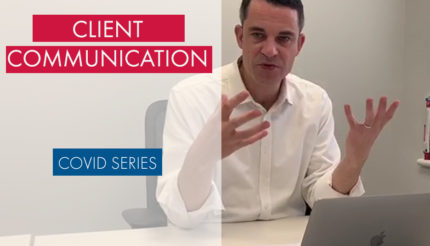We’re going to explore ‘The 7 Steps To Newsletters Success’. Here is step 4.
4. How (to write your newsletter)
USP & Guarantee … Two things that you should consider including in your newsletter are your USP and any guarantees. Your USP (Unique Selling Point) is the one thing that is truly different about you, or at least, the one thing that you can promote as being different. A successful USP should be…
- Truly unique.
- Exciting to your target market.
- Something that will have your customers telling their friends about it.
- Something that can’t be easily copied.
A lot of business owners wonder why they need a uniqueness at all, shouldn’t there be room for dozens of ‘me-too’ businesses? The fact is, there isn’t, and the ‘me-too’ businesses will ultimately go to the wall.
If you don’t have an existing USP, you’ll need to find one. Start by listing down everything you do that could be considered even a little bit unique. These points don’t have to be earth shattering – just different enough to standout.
Your Very Own Newspaper … One of the things that many people don’t consider when they’re producing their own newsletter, is that it really is their very own newspaper. Now it’s obviously not going to be considered a daily paper, nor even a weekly or monthly publication. But the rules for producing your newsletter are the same as those for a paper.
For starters, your newsletter should have an exciting lead story. Now it’s not going to be about politics or scandal, but it does need to generate interest. This is important because if you don’t get people interested in what you’ve got to say with your very first story, you won’t get them reading on.
Product Previews and Reviews … This is easily the 2nd most exciting section you can include in any newsletter. In case you’re wondering what the most exciting is, don’t worry we’ll get to that shortly.
People who are interested in your products or services, will always be interested in finding out about new products, or in the case of a service-based business, new techniques. So therefore, previewing new products will ensure a high readership. There are 2 basic ways to go about it.
The first way is to simply look at the features, and more importantly the benefits, of new products as they come into the market. In many cases you can get editorial style material from the supplier themselves. Major suppliers will probably have paid an advertising agency, or public relations company, to write something for them, about their new products.
The second way to write up a new product is by doing a comparison or ‘test run’, against other new products in the market. This is often done by car magazines who run ‘showdowns’ between new models competing for the same market placement.
Tips & Hints Section … I mentioned earlier that a product preview section is the second most exciting and well read section you can put into any newsletter. The most exciting is easily a Tips & Hints section. A lot of people worry whether or not their customers are going to read their newsletter, let alone act on it. The best way to ensure that they not only read it, but also look forward to each new issue, and even collect them, is to include some handy hints.
Imagine a hardware store that included a special section on how to prepare your house for painting, or how to lay pavers in your garden. This sort of free information is sure to be a winner, even with people who aren’t looking to paint their house or put a path in their garden. Clients will hold onto this information so they can refer back to it at a later date.
Upcoming Events … People like to know what’s going on and hate to miss out on something special. Therefore, you should include an upcoming events section to let people know what’s going on. There are several things that you can include here, from upcoming sales and promotions to products that are due for release.
Introduce Your Team … One of the real benefits of newsletters, are that they make your customers feel a part of what’s happening in your business. A good way to add to this feeling of being ‘part of the team’, is by introducing your team members in a profile section. You see, people buy from people, not from companies. By letting people know a bit more about who they’re dealing with, it makes them feel more comfortable buying from them.
Get Someone from Outside Your Company to Write a Section … Business owners complain to me that writing their newsletter takes up so much of their time. See, they all made the mistake of believing that they had to write it themselves. This is not true.
Simply approach someone from an associated type of business, to write the column for you. Now by associated business I don’t mean one of your competitors. I mean someone who works in a similar field, that can give you a relevant article.
Imagine if you had a sporting goods store. You could approach a physiotherapist, a sporting coach or a fitness advisor to write expert articles for you. Just imagine how this would improve the readability of your newsletter. It would add an exciting new angle that would ensure that people read on.
Humorous Section … A quarter of one page is usually ample. The first choice is to have true stories. These can be things that have actually happened, that you’ve either heard of, had happen to you, or things that have happened to one of your customers. The second choice is to have a few jokes. You can of course have both but be careful that you don’t tell any jokes that might offend your clients. Also, try to keep them to stories and jokes that relate to your industry.
Customer Stories … You can include things like congratulations on new births, engagements, or perhaps even promotions that they’ve received at work. Listing some of their success stories may also make for good reading. Maybe they’ve just won a sporting event, or their child has just won a baby contest. Whatever it is, it’s worth putting into your newsletter.
Sales Sections … You might have noticed that to this point, we’ve spoken a lot about the sections that will get people reading your newsletter. But having them read is pointless if in the end they don’t buy. Understanding this it’s obvious that your ads and selling messages are the most important parts of your newsletter.
A good way to get people coming in, and to actually work out if you’re getting a good response from your newsletters, is to place a coupon in them. Coupons are a great way to measure the success of your campaign. If you’re not getting coupons back, then your newsletter is not working. Because many people will only briefly look over your articles you need to have a strong offer in your coupon.





